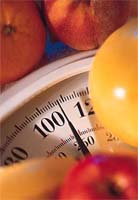Those who run or walk briskly for 35 to 45 minutes per day, five days a week, spend about half the number of days per year suffering from cold symptoms, compared to sedentary people. In addition, about 60 per cent of recreational runners experience fewer colds after they initiate a running programme, compared to when they were sedentary.
You probably did know that the risk of illness tends to increase as training volume mounts For example, famed American marathoner Alberto Salazar developed 12 colds in 12 months while overtraining for the 1984 Olympic Marathon, in which he performed poorly (the average adult contracts ‘only’ two to three colds per year). ‘My immune system was totally shot as a result of my training,’ says Salazar. Many other athletes have noticed a strong connection between high-volume training and illness, and the most common medical problem for athletes at both the Winter and Summer Olympic Games is not strained ligaments or sprained tendons; it’s the upper-respiratory-tract infection (aka the common cold).
However, you probably weren’t aware that a single, rugged test of endurance can also markedly increase your chances of getting sick. Research carried out has shown that about 33 per cent of runners who complete The Old Mutual Two Oceans 56K Marathon come down with an upper-respiratory-tract infection during the two weeks after the race
And mum probably forgot to tell you that if you run about 100 or more km per week, your risk of illness is about double, compared to the individuals who log less than 32 weekly kms. That suggests, of course, that immune function declines as training volume increases, yet we also know that runners tend to be healthier than sedentary people. So, a very reasonable question would be: what number of kms per week is best for overall health?
Even mum herself doesn’t know the answer to that question. The epidemiological evidence indicates that running a moderate amount of km is better for your health than staying on the couch. However, running lots and lots of km is worse for your health than being moderate: mega-mileage is associated with lots of sniffles, coughs, and perhaps other problems. Basically, the graphical plot of illness frequency versus mileage is a U-shaped curve. If there’s no mileage, there is quite a bit of sickness, middle mileage leads to little illness, and high km let the microorganisms rule again. The ‘middle ground’ of best health may well be 25 to 50 km per week or so, or 35 to 45 minutes per day, but no one knows for certain, and the optimal amount no doubt varies from person to person.
You may not have been aware that over 200 different viruses can cause colds, but that a certain class of viruses – the ‘rhinoviruses’ (literally, viruses which affect the nose) seems to produce the most mayhem. Contrary to what you may have thought, it’s not very easy to catch a cold directly from someone who is coughing and/or sneezing, because only small numbers of cold viruses leave the body in emitted mucus (that’s not true for flu viruses, however, which fly out of the respiratory system in droves with a cough or sneeze). Running in damp, cold weather does not raise your risk of getting a cold, either.
As mentioned, moderate running, even in the winter, provides some protection against those ubiquitous cold viruses. Those who run or walk briskly for 35 to 45 minutes per day, five days a week, spend about half the number of days per year suffering from cold symptoms, compared to sedentary people. In addition, about 60 per cent of recreational runners experience fewer colds after they initiate a running programme, compared to when they were sedentary.



























Speak Your Mind